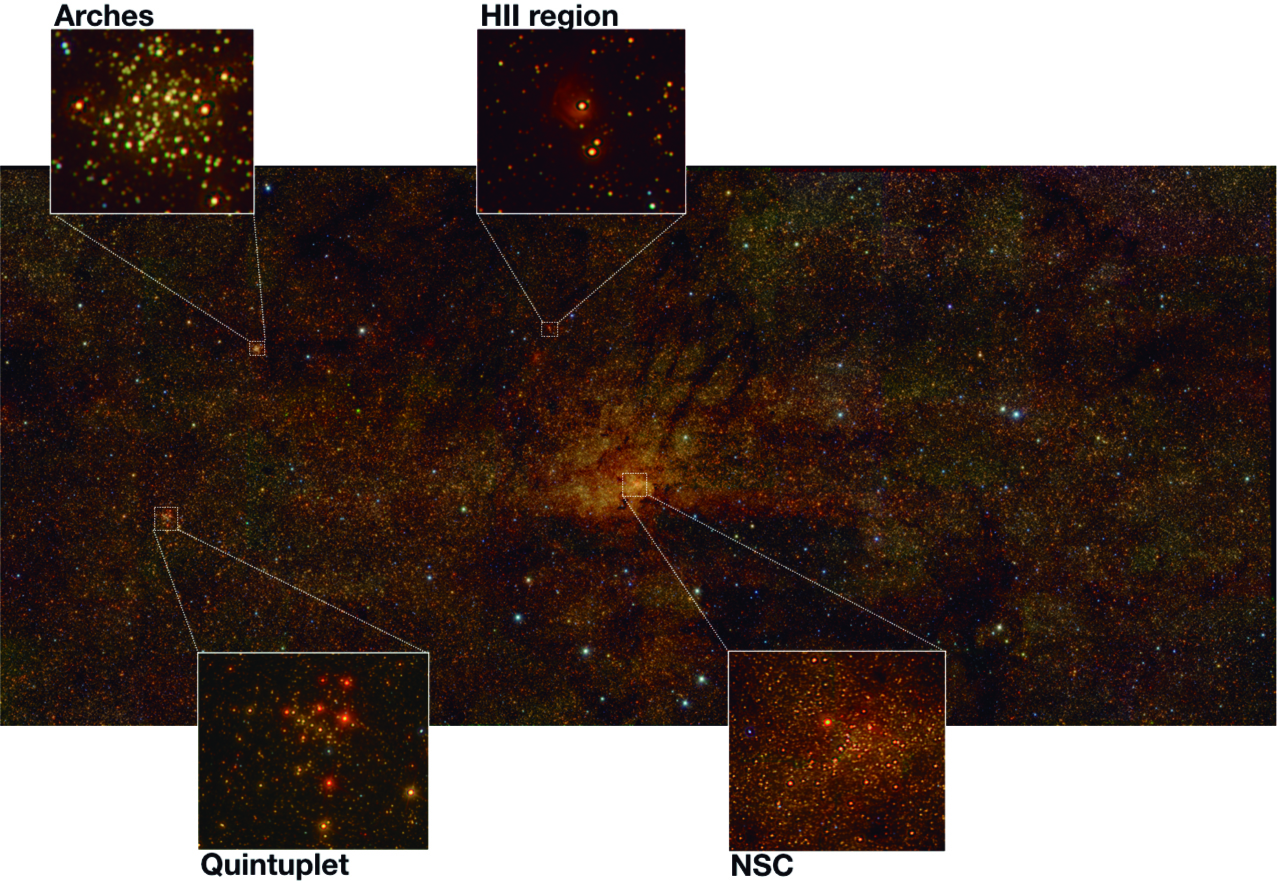The first results of the GALACTICNUCLEUS project, the most detailed star catalogue of the galactic centre, are published
-
GALACTICNUCLEUS will allow to study the stellar population surrounding the super-massive black hole of the galactic centre with unprecedented detail
-
The work, led by the Instituto de Astrofísica de Andalucía (IAA-CSIC), offers the most extensive census of stars in the galactic nucleus recorded to date
Researchers at the Instituto de Astrofísica de Andalucía (IAA-CSIC) have just published the most extensive catalogue of stars in the galactic centre to date. The centre of the Milky Way has a high scientific interest, since it houses a super massive black hole of about four million solar masses, which is surrounded by a dense stellar cluster.
This region, with a density of stars much higher than that of the environment of our Solar System, is representative of other nearby galactic nuclei. "Its uniqueness lies in the fact that, being the closest, it can be studied in greater detail. Due to its characteristics (the central black hole, the high density of stars, the intense ultraviolet radiation, etc.) the galactic centre constitutes a unique laboratory where to study, among others, phenomena such as stellar formation in extreme environments, or the interaction of stars with a supermassive black hole" affirms Rainer Schödel, principal investigator of the project.
However, it is not easy to observe the galactic centre. The very high density of stars in this region causes its light to saturate the detectors normally used to observe it, which means that many stars cannot be studied. On the other hand, the large amount of matter and gas standing between the galactic centre and our planet are responsible for the extreme redness and extinction of the light emitted in the nucleus of the Milky Way (in the visible range). Therefore, it is simpler to study this region in the infrared, less sensitive to this effect.
The GALACTICNUCLEUS project has managed to map this area in unprecedented detail. To do this they have taken rapid series of hundreds of short exposures (one second or less) with one of the instruments that observe the infrared in the Very Large Telescope (VLT) of the European Southern Observatory (ESO). In addition, they have relied on archive images from both the Hubble Space Telescope and other instruments from the VLT telescopes. These series of images have been meticulously analysed by IAA-CSIC researchers to offer what is, to date, the most exhaustive catalogue of stars in the galactic centre. One of the great challenges of the project lies in capturing, storing and managing large amounts of data (about a hundred times more than with more conventional procedures).

"The centre of our galaxy is an extreme environment which is the most prolific site of star formation in the galaxy. Our new catalogue will help to understand this process and determine the regions of star formation," explains Francisco Nogueras Lara, one of the IAA-CSIC scientists involved in the discovery. "One of the main objectives of GALACTICNUCLEUS is to be able to reconstruct the stellar formation history of the centre of our galaxy," he adds.
The GALACTICNUCLEUS project, which began in 2014, is funded by the European Research Council (ERC), which promotes scientific excellence through its Consolidators Grants. In the coming months, the results of this catalogue will continue to be published and will still provide clues about what is happening in an environment such as the galactic centre.
F. Nogueras-Lara et al. "GALACTICNUCLEUS: A high angular resolution JHKs imaging survey of the Galactic Centre". Astronomy and Astropysics, XXX:YY (September 2019) DOI: 10.1051/0004-6361/201936263
Francisco Nogueras-Lara - 0034 615 39 35 94
Emilio J- García - 649 407 445
Instituto de Astrofísica de Andalucía (IAA-CSIC)
Unidad de Divulgación y Comunicación
Silbia López de Lacalle - sll[arroba]iaa.es - 958230532
http://www.iaa.es
http://www-divulgacion.iaa.es

